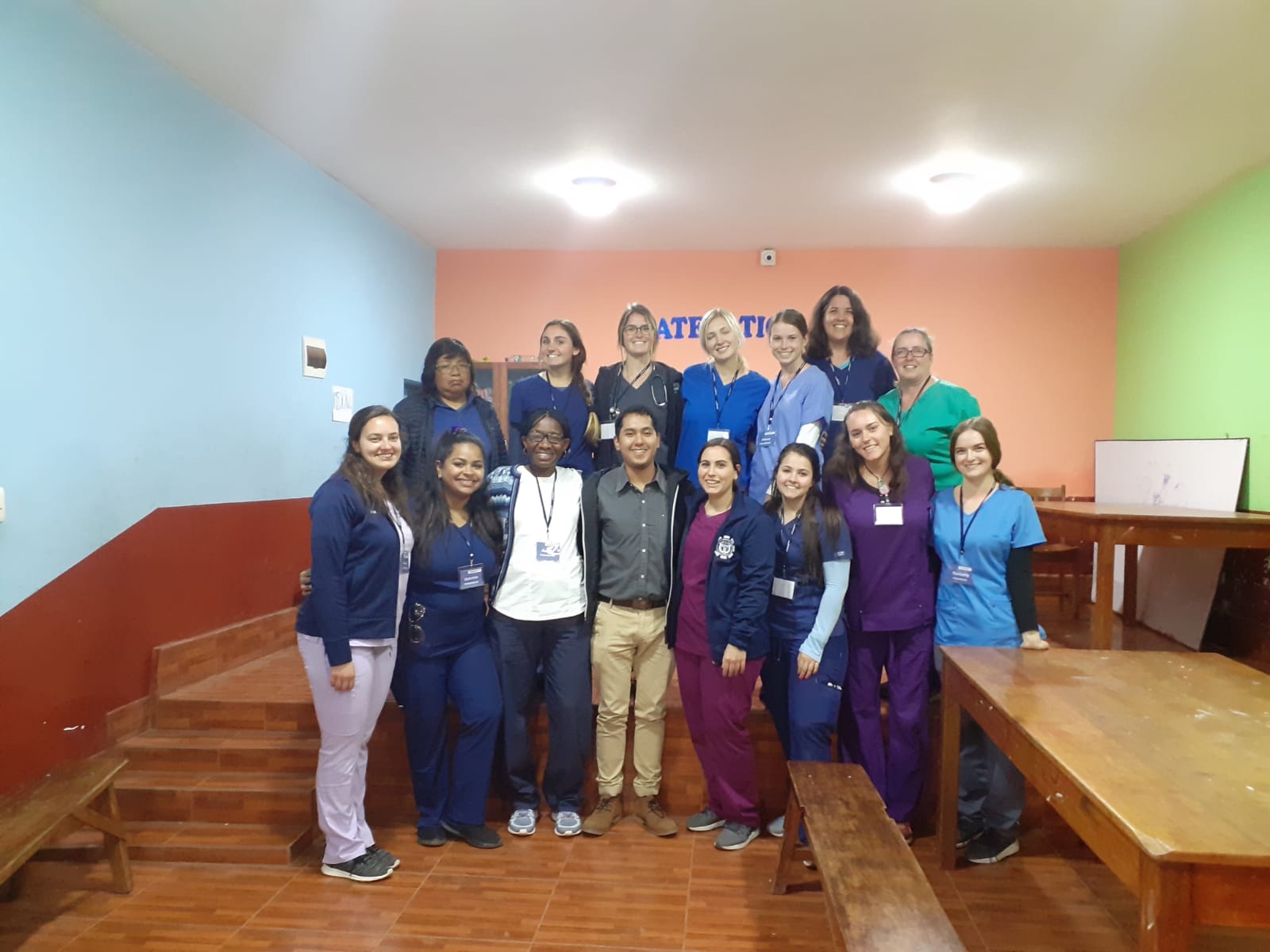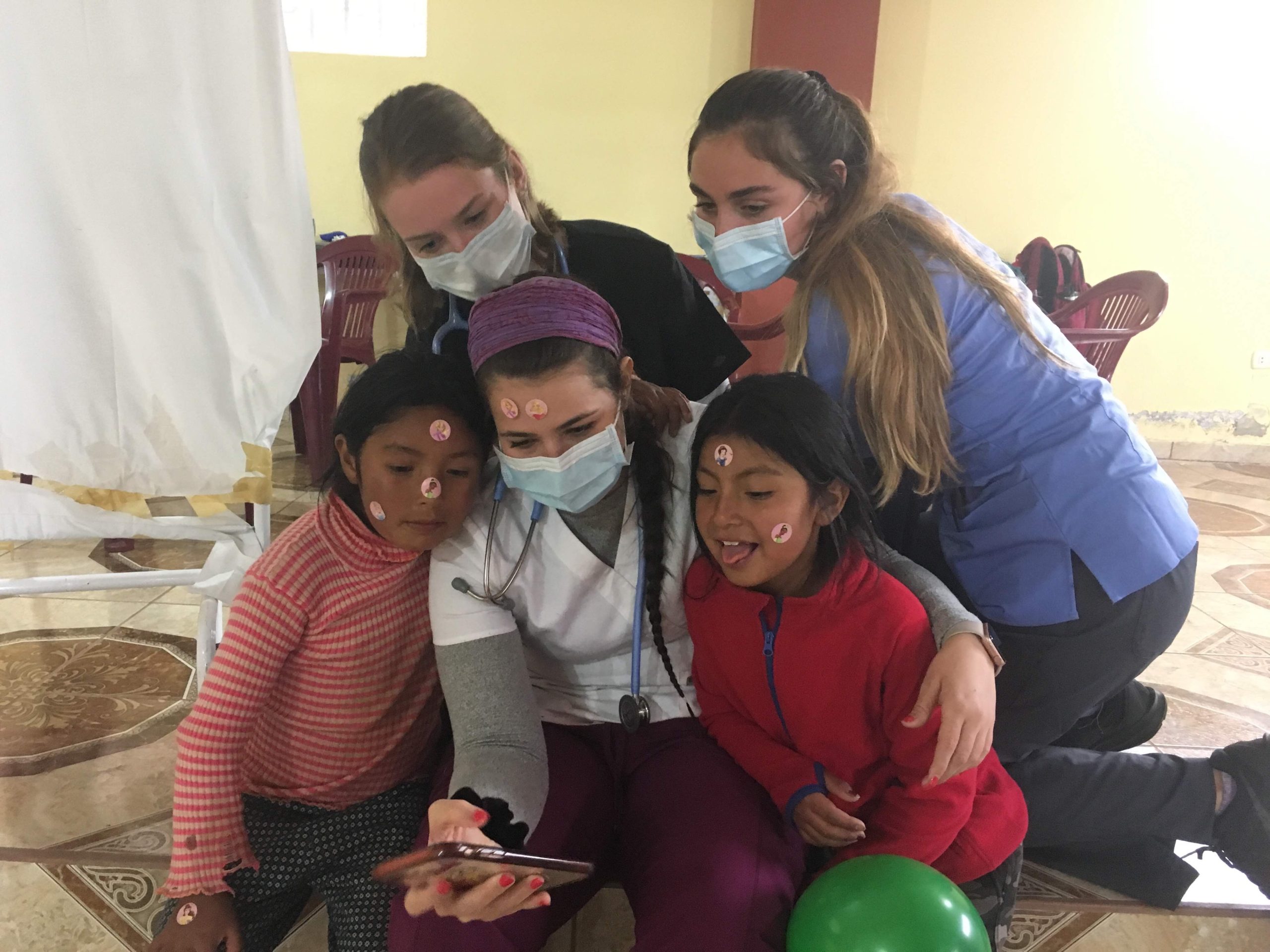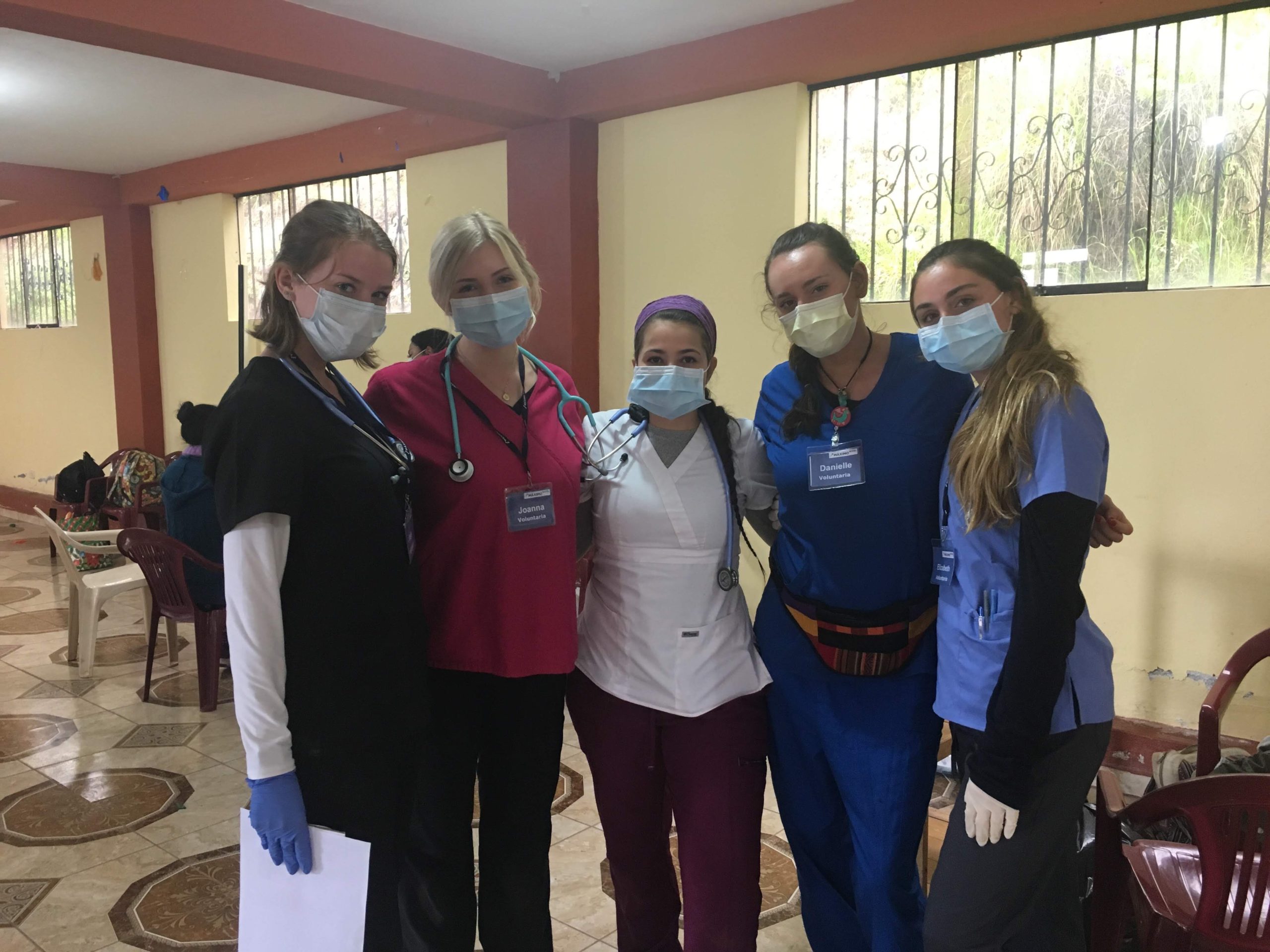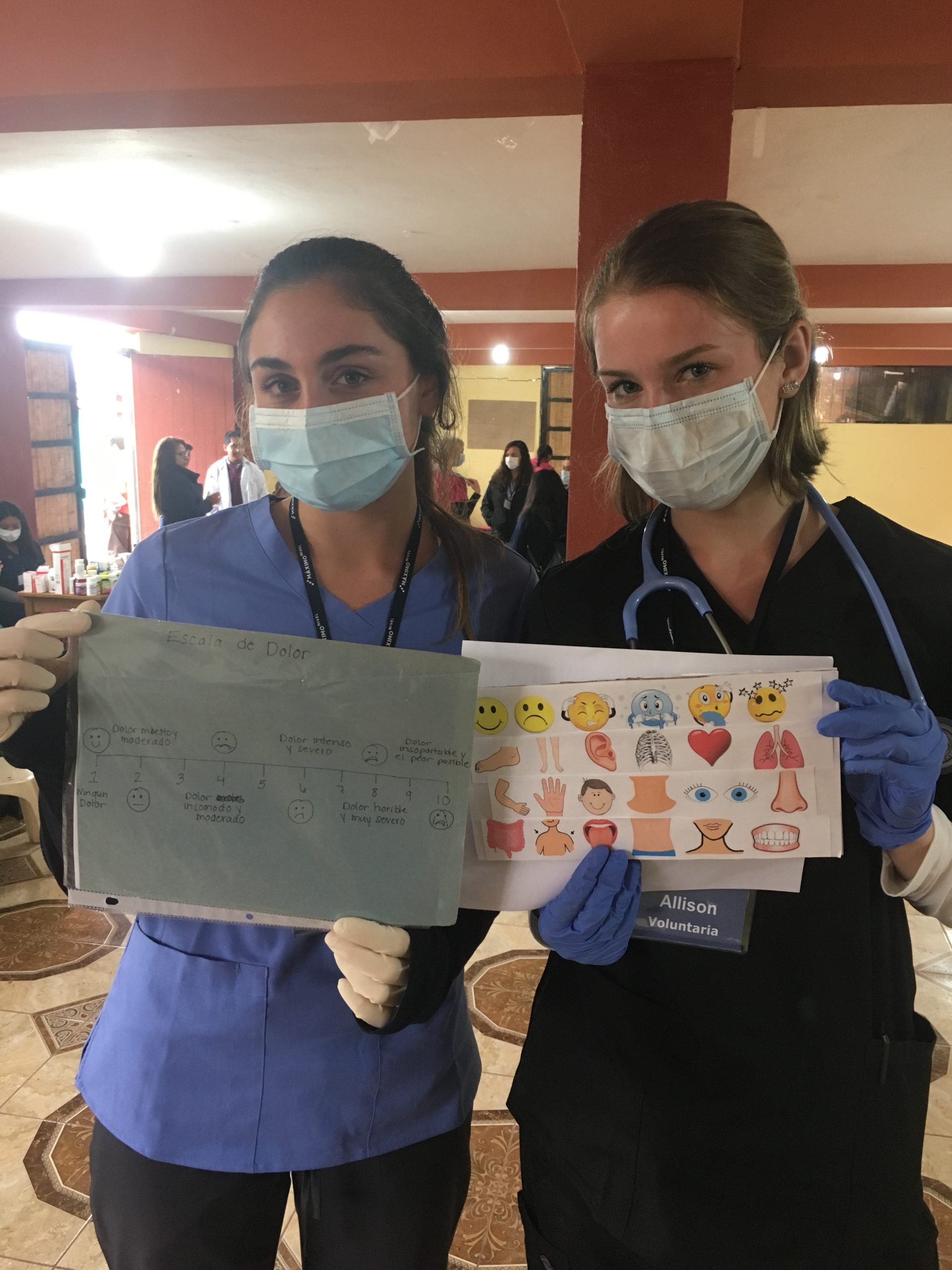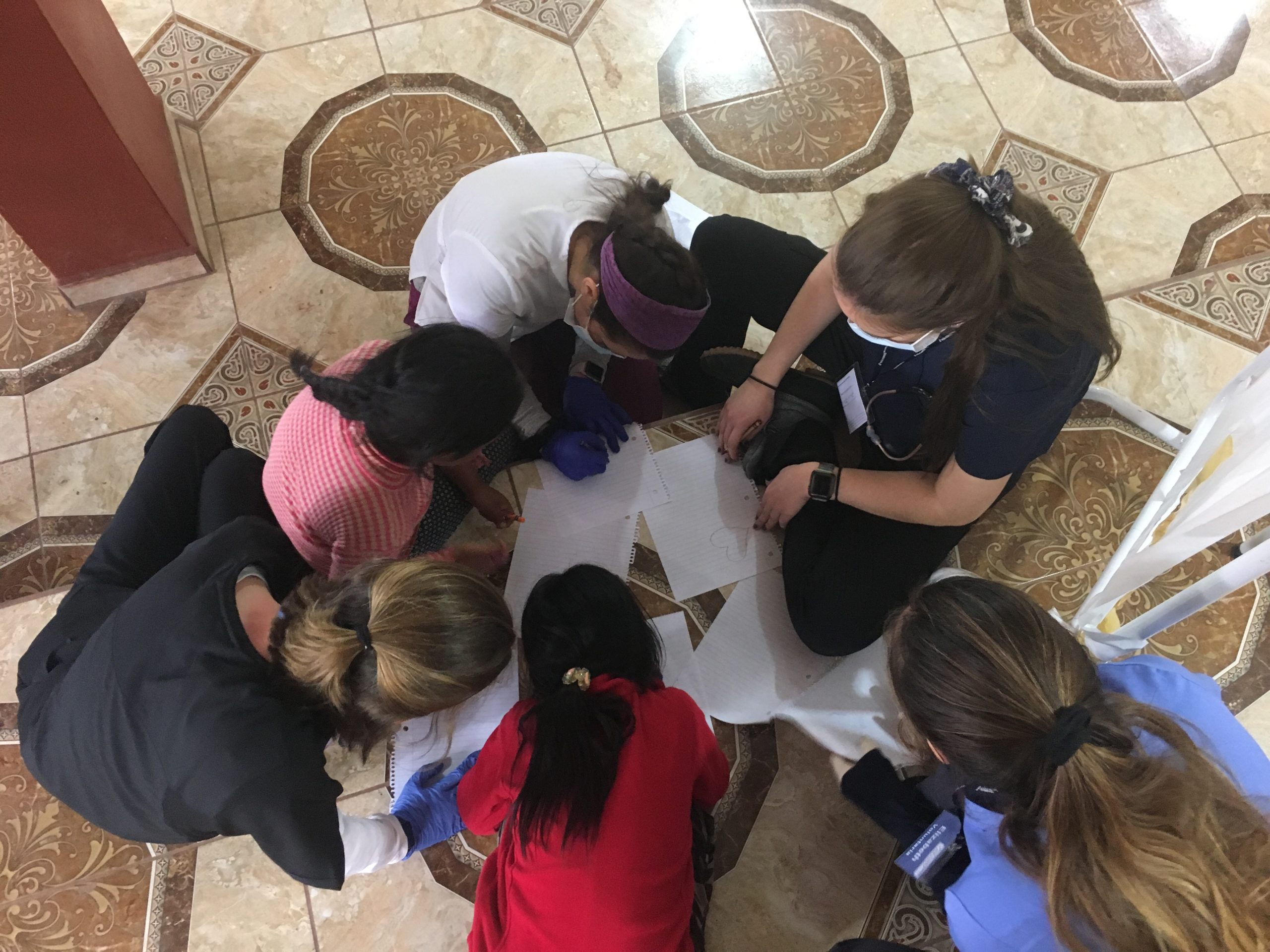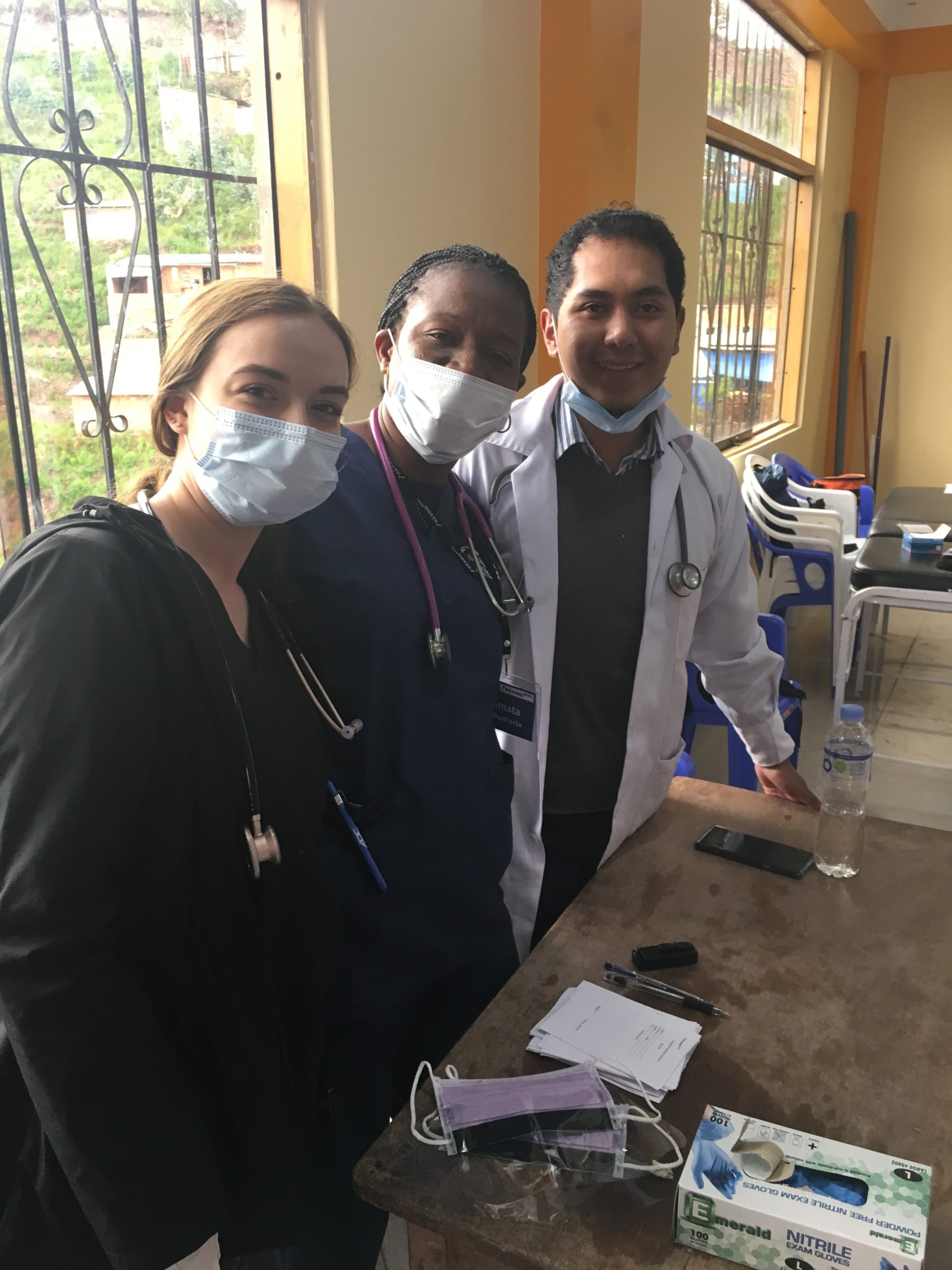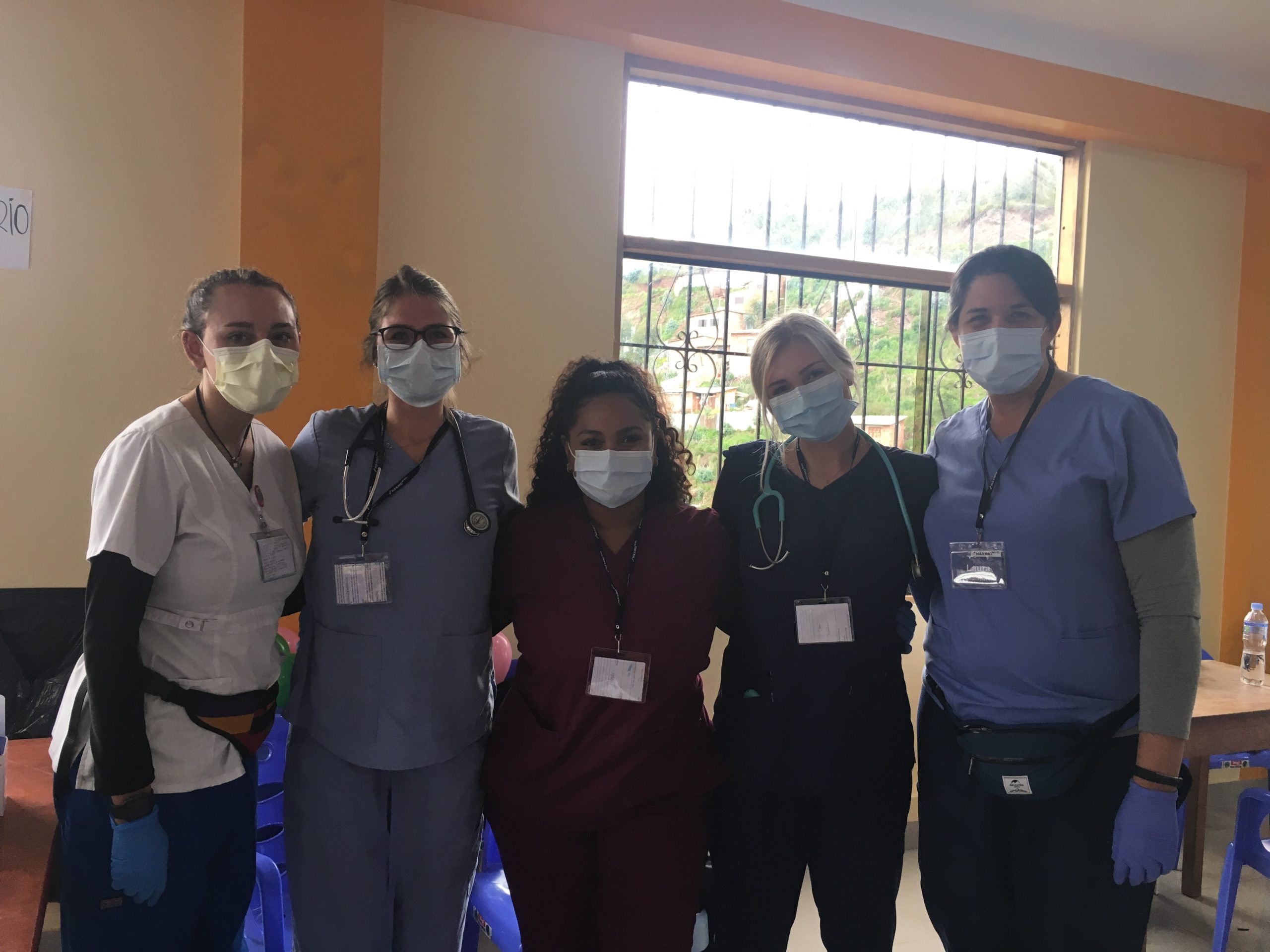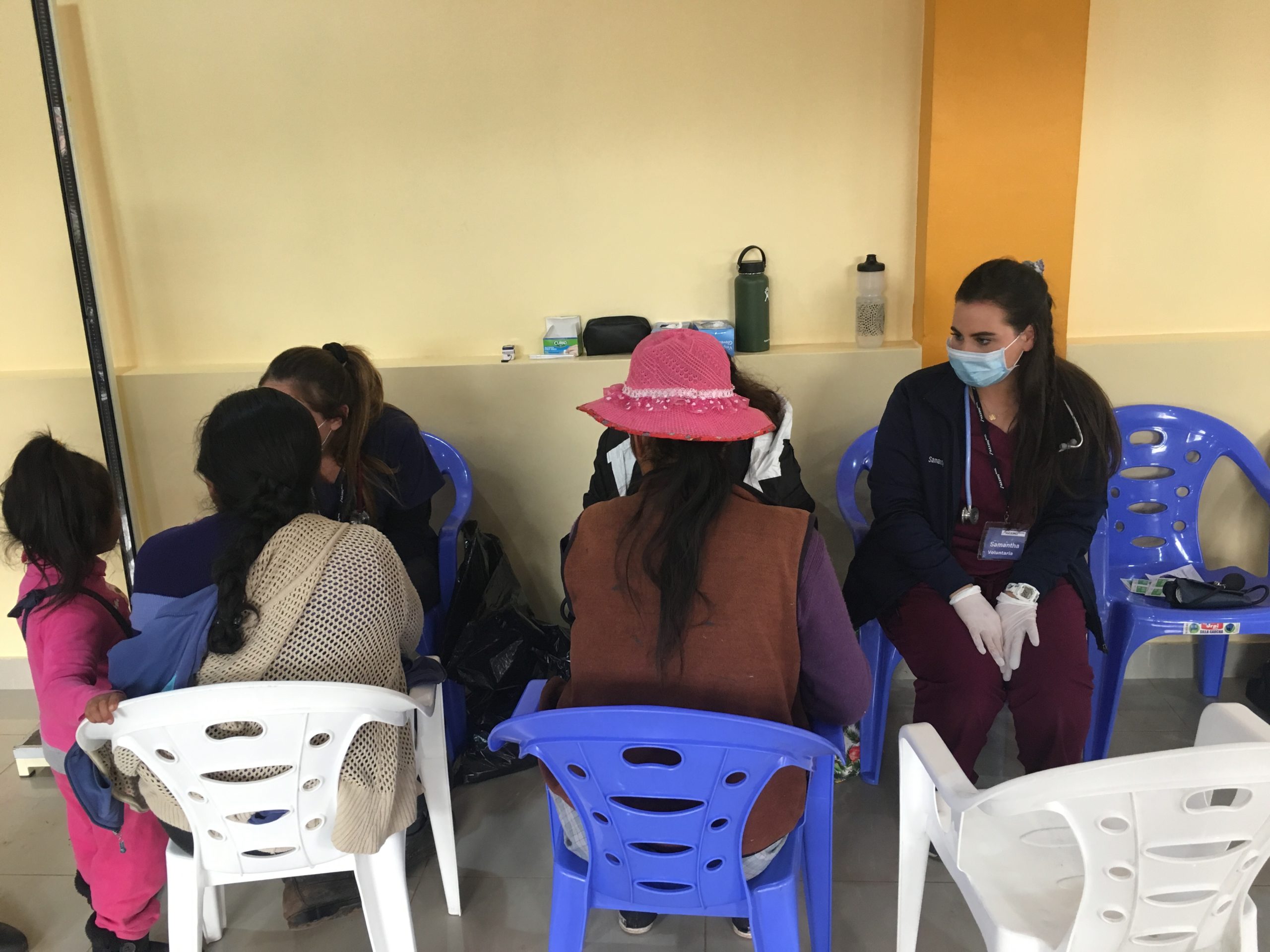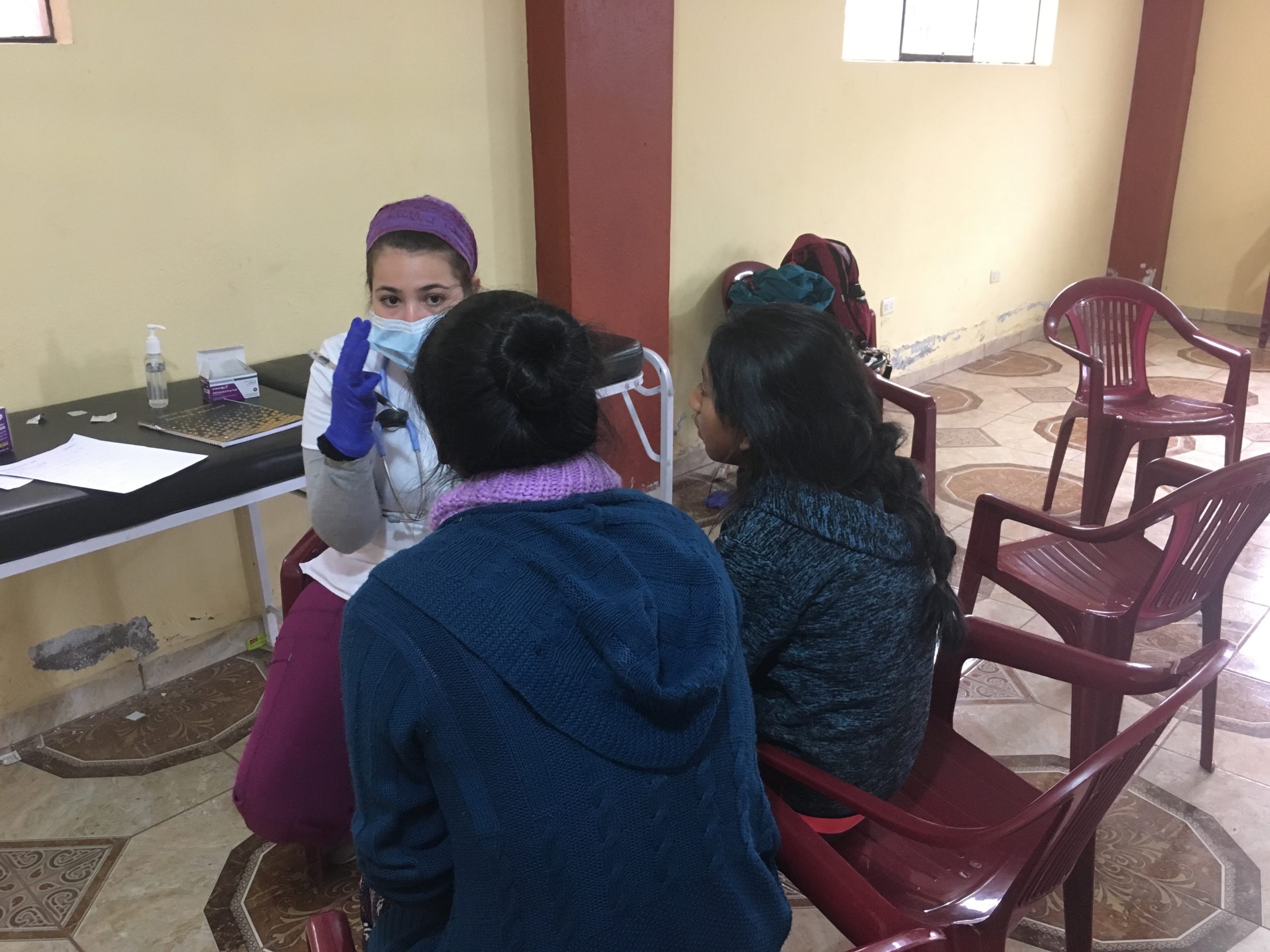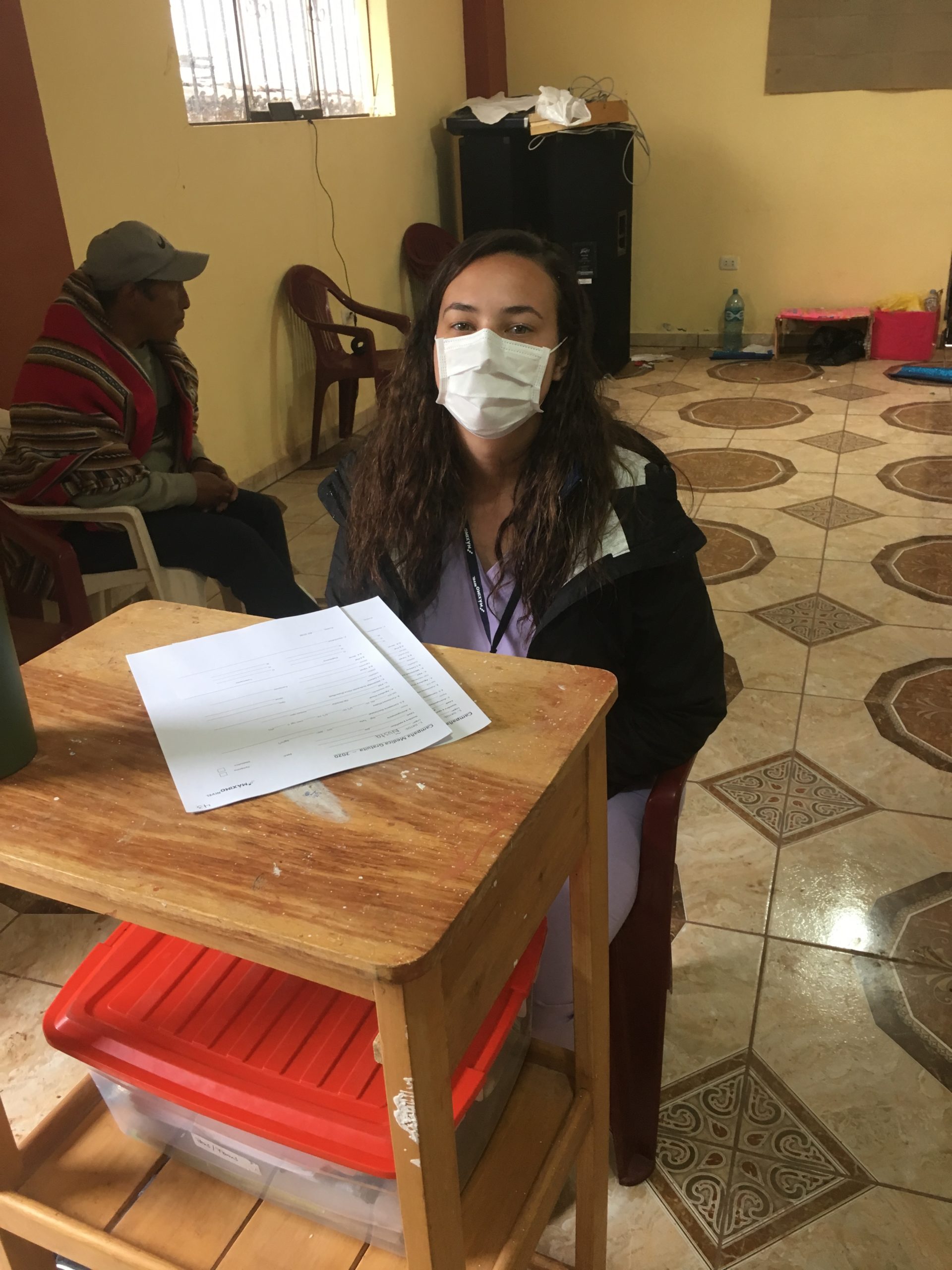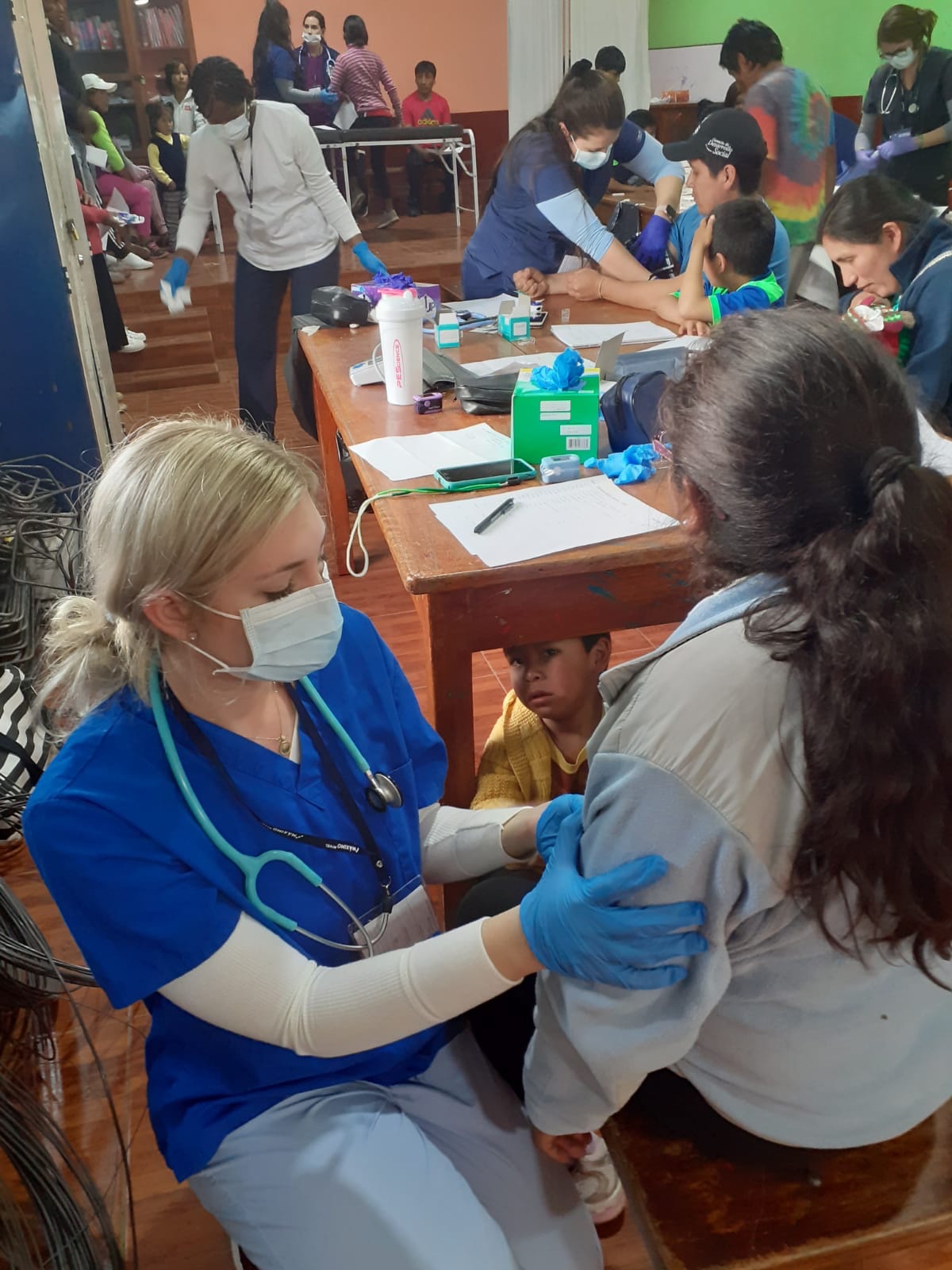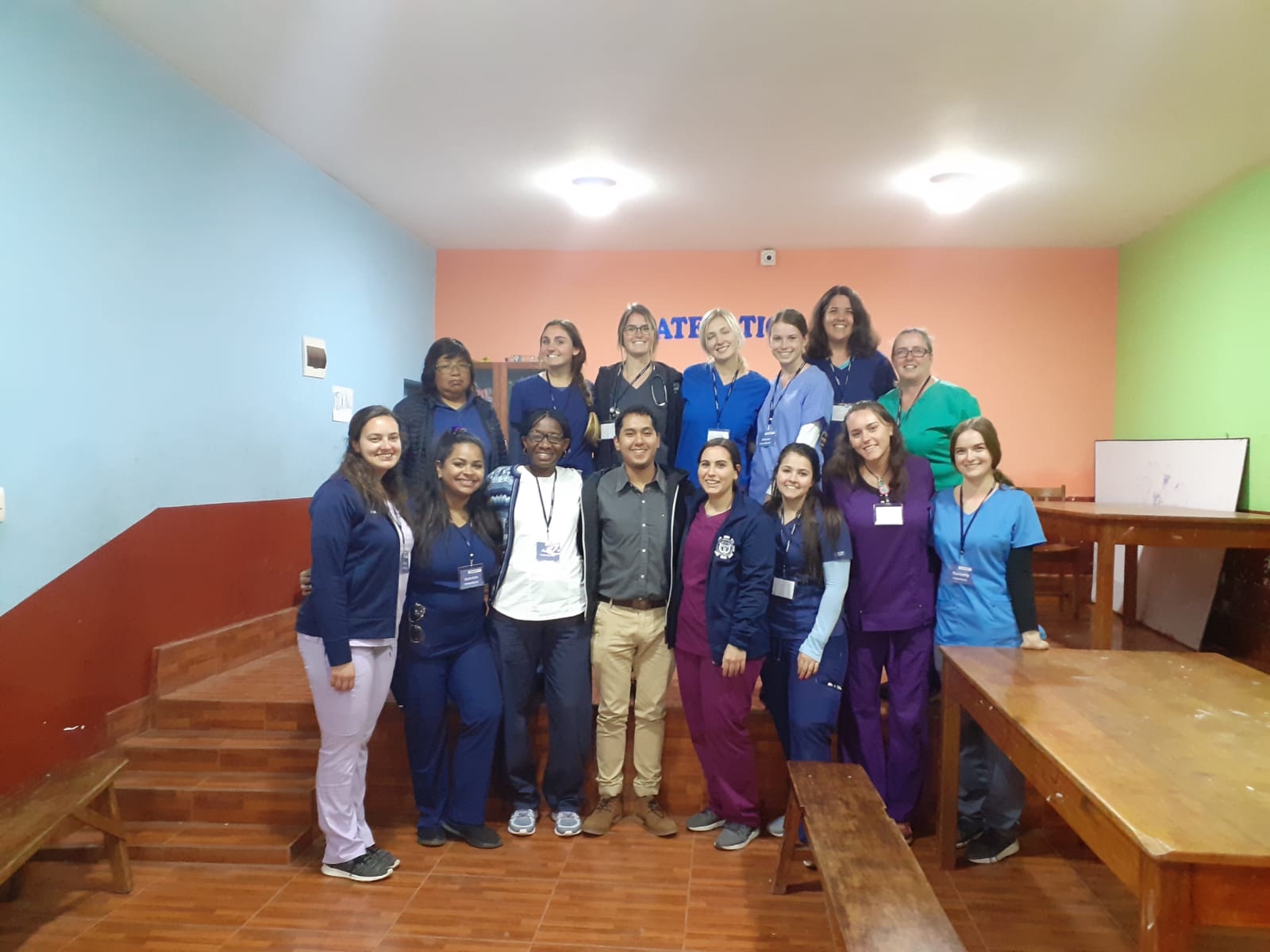“Hola!
Today’s clinic we were on a mountain named Ñusta. I was at the head to toe assessment with Lexy and Allison. Going into this station I was a little nervous and uncomfortable with speaking Spanish and interacting with the patients. Though my confidence was low at first Laura was very helpful and she encouraged me to try speaking Spanish on my own and eventually I was getting the flow of the questions. Midway through the clinic I was able to interact with the patients and do my job as a volunteer. Overall it was an amazing experience I connected with the people and I was having fun giving back to the community. I learned so much Spanish from Laura and just having a conversation with the patients. My confidence as a student nurse and with my Spanish speaking skills went up an immense amount. This experience really gave me perspective and grounded me in away that aloud me to connect with the patients on a more simple level. Everyday in the clinic is a different rewarding experiencing that I am grateful to be apart of.”
-Liz Porter
“I think we can all agree that today differed from all our previous days here in Peru. Although we were more confident with our nursing skills today than we were on our previous days at the clinic, that wasn’t it. Although we were more familiar with our spanish medical terms, that wasn’t it. Although we knew what patient population to expect and the supplies needed for it, that wasn’t it. Today was different because today, we became one community with our patients rather than having the dividend of patient – provider.
Kim, Amata and I were in laboratory today. This is where we check the blood sugar of the patients above age 10 and check for anemia for patients aged 3-5. It’s a quick procedure, where you prick one finger and test the blood using a machine. We helped the patients who were in line for our station and noticed that there was a “break” in the flow. Kim looked at me and said “I want to play with the kids” and I replied “let’s do it.” We got up, and approached the children who were sitting on the floor. We gave them little toy cars. They are so innovative, making a ramp, a tunnel and a bridge out of a piece of felt. They played with the car and the felt for a long time, constantly coming up for new uses for the felt. All these kids needed were a piece of felt and their imagination, and they were beyond content.
After more kids joined us, we decided it was time for a new activity. We had crayons and little slips of paper we were writing the blood values on. Every time I gave a kid one crayon, their face lit up. “para mi???” they asked in disbelief. I began to draw a car on the paper, step by step, showing each step to the children. They were so interested and focused, diligently following along with my steps. Once the car was done, they were so excited! Next, we drew a frog together. One of the moms approached us as we were drawing and tried to get her kids to go home, and they begged her to stay to finish the picture. Once the frog was completed, once again, pure joy. Once we were done and it was time to leave, one boy tried to return a crayon to me, and when I told him he can take it home, he put on the biggest smile and gave me a hug. All because of one. crayon.
This just really put the societal differences in perspective. I thought about all of the complex toys we had growing up in the United States which we got bored with and began to complain about within minutes. I thought about the packs of 250 crayons that kids break and throw at home. The children I played with today held that one crayon like it was a trophy, a prized possession. I was also surprised by the range of ages drawing with me. Each kid helped the next if they were unsure, but they all made sure to finish the drawing. In our experiences at home with kids in similar ages, they get bored within minutes. “Can I go watch TV? Can I go play a video game?” is the question that follows three minutes of any non-electronic activity. Meanwhile these kids hugged us, the parents thanked us, and everyone left happier, including us. By the end of the clinic, every single one of us were playing with the children and conversing with the parents. They even wanted to take pictures with us for memories! I’ve never seen people so joyful and appreciative, especially because of the smallest things. Today was a humbling reminder of how important it is to always focus on the positive in all situations, to value what you have no matter how abundant it is and to always make others feel welcome regardless of their relation to you.”
– Joanna Kirkicka
“Working in the clinic was very educational for all of us. We learned in class how to use a glucometer but this was the first time I actually tested blood sugar before. I am also shocked at how many cavities all of our patients had. Oral health is something that is very important to our overall health and is something we take for granted in the United States.”
– Amata Domasseh
“Working in the clinic really opened my eyes to how truly fortunate we are in the United States. Some of our patients have never seen a doctor before in their lives and the way that they live is totally unsanitary. They would never reach the standards we have for healthcare. I learned so much during this trip and I am especially thankful to Laura for helping me translate and to improve my Spanish. I was very nervous in the beginning but as I got more comfortable, I was able to speak to the patients by myself.”
– Lexy Forsyth
“This was an amazing experience and I feel that I learned a lot that can help me in my future nursing career”
– Allison Osborn
